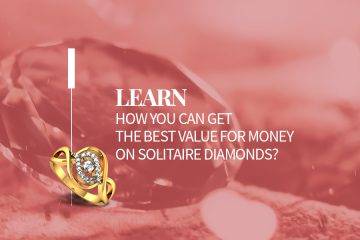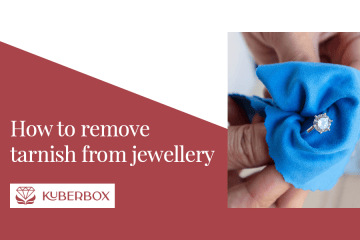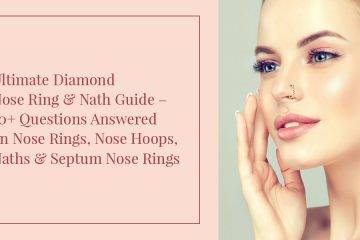Ruby – The King of Gemstones & the Birthstone of July
This month prepare yourself for a King – the Ruby. The birthstone for the month of July, it is also referred to as “Ratnaraj” obviously translating to the King of gems. This influential stone at first glance will leave you in awe of its colour besides all of its other properties. Ruby’s strong Red to slightly Purplish-Red hue speaks of love and passion and is thought to protect its wearer from a lover’s doubts. KuberBox has a skilled team of designers and quality control personnel who have put together some designs that you won’t be able to get your eyes off.
Rubies are commonly known as Manik (माणिक) in India, and are the guiding force of the Navratna. Commonly worn as a pendant or a ring, the Navratna is a collection of powerful stones that are thought to protect its wearer from innumerable forces. Representing both the sun and the eternally strong Leo sun sign, there’s no doubt why the Ruby is such an authoritative gem.
At KuberBox we select all of the best quality natural rubies without any treatments for use in our jewellery and these are sure to have a lasting effect when making a statement. When we choose gemstones for our jewellery, traders come with numerous parcels of gemstones, each wrapped in what the gem trade calls a parcel paper. These papers once opened are like a sea of red, with every inch of the stone glittering. Rubies are known to catch the light very well and have good brilliance as the light reflects off theses stones.
Rubies are known to be the second hardest gemstone and have a hardness of 9 as recorded on the moh’s scale. The same scale that ranks diamonds the hardest gemstones on the planet at number 10, the highest achievable value on the scale. With such a high hardness it’s no surprise why rubies are so brilliant and are ideal for use in everyday jewellery. Rubies, the birthstone for the month of July is also known to bring health wealth and wisdom to its wearers.
Rubies are a variety from the species Corundum, the same species that houses Sapphires and all the other colours of sapphires like the ever famous Padparadsha, Yellow Sapphires, Green Sapphires to name a few. This corundum gets its name from the Latin word “Ruber” which explains its red colour. Corundums are chemically made of two elements – Aluminium and Oxides that combine in a specific manner to give the transparent variety of Sapphire. The addition of a trace element causes the colour alterations, and in the case of Ruby, this trace element is chromium, which converts the transparent sapphire to the warm red hues that tend to command high prices.
When it comes to Rubies you might be wondering how and where these beauties form, but as you will read on, you will find out all there is to know about the red marvels. KuberBox sources all its stones from reliable dealers and some of our friends in the industry have been kind enough to share vital information with us, which we thought you must know too.
Rubies as with all other sapphires form in the hexagonal crystal structure, which means in the rough these gems, are shaped in the form of a hexagon. As this is their growth structure these gems tend to have colour bands that follow this growth pattern, which can also be seen as inclusions within the stone. As a gem that can form in both marbles and basalt the gem is quite versatile, although the rubies that form in the marble base rock tend to have a softer, brighter appearance that is so much more valuable.

Ruby in its marble host rock
The best rubies are known to come from Burma although it is known as Myanmar today; this geographic region still produces some exceptional stones. Rubies in lighter tones come from Srilanka, a close relative of India. Thailand and Vietnam are good sources for Rubies and are known for the treatment they carry out on these stones to improve their colour and clarity. The nation of Madagascar and neighbouring parts of Africa are also contributors of this highly demanded gem.

These classic secondary deposit rubies are from the Mugloto area, Montepuez. Most of them are tumbled and clean, as they experienced millions of years weathering by the river that transported them. Note the darker color of these stones caused by relatively higher iron content.
As with other gemstones the colour, clarity, carat weight and cut are prime factors that determine the price of a stone. We have already covered that the red to purplish red hues of a ruby are the highly valuable colours and can look a lot like the stones in the images below. When it comes to colour, fine rubies are compared to the blood of a pigeon because of its deep red colour. Pigeon Blood Rubies that were discovered in the Burmese region, stood to display this exceptional colour unmatched from any other location.

Different qualities of ruby
Clarity of a Ruby is another factor that you should know as an informed customer. All natural gemstones have identification marks that give a stone its character. It is almost like a fingerprint separating your stone from any other gem out on the market. These could be fingerprints, crystals, needles etc. as shown in the images below. Although heating of rubies is a treatment accepted by the gem trade, stones that are heated must be sold with a clear indication of the treatment. Many traders heat stones to improve their colour, which could also alter the inclusions present within the stones.

Silk seen as an inclusion in Ruby
KuberBox sources all its gemstones from ethical suppliers and we guarantee you of your purchases. We also offer you a certificate with each jewellery piece to build your confidence in the jewellery. At KuberBox you will find a piece for every occasion, from a simple solitaire ring laying emphasis on the Ruby, or as smaller side stones used to complement a diamond, KuberBox has it all!
Rubies have an alternate variety, the phenomenal Star Ruby; known for the star it produces under reflected light. Needles that intersect at different points are known to cause this 6 or 12-rayed star and is termed “silk”. Star rubies are most commonly natural stones and can easily be identified under magnification. The presence of silk is a good indication of natural origin along with its pleochroism that can be seen in different angles. Star Rubies are found in Srilanka, where they display a raspberry red colour. A small producing region is in the south of India but stones are so few it remains an unimportant location. This variety of gem is commonly cut as a cabochon instead of a faceted stone to be able to display its characteristic star.

The phenomenal 6 Ray Star Ruby
There are numerous gemstones that pass through our quality control department at KuberBox and we have come across a sub variety called the Opaque Ruby in the industry. Its deep red colour and heavy inclusions make it almost opaque when viewed against a light source. Upon magnification one can see a variety of inclusions combined in a stone from fingerprints, crystal inclusions, silk to hexagonal colour banding.

Carmen Lucia Ruby

The Etcetera Ruby
Transparent Rubies are generally faceted so that light can enter the stone and reflect off each facet giving better brilliance to the stone from within. Different faceting styles are quite common in rubies although the cut is greatly determined by the carat weight. Rubies are a rare stone when it comes to ideal colours and valuable reds. This makes the gem cutters job very difficult, as they have to retain as much weight as they can from the ruby rough as even a small increase could greatly affect the price. Some of the famous large stones are the Carmen Lucia Ruby weighing 23.10 Cts, which is now housed in the Smithsonian museum, or the Etcetera Ruby weighing 6.04 Cts that sold for $ 3,347,042 at Christies.
Heard of Synthetic Rubies? But what are they?
Synthetic rubies are Rubies in their true sense with the same chemical composition as natural rubies but have been grown in a laboratory with human intervention. They look just like natural rubies although under closer inspection they have different inclusions, which help in telling them apart. Having entered the market years ago, these stones are still used in jewellery for their colour and price. Synthesised using two different techniques the Flame Fusion method and the Flux method these synthetic gems have their own inclusions on the basis of their growth techniques.

Flux seen in a fingerprint
Being born in the month of July gives you the right to indulge a little by buying yourself some Ruby studded jewels. Alternatively if you’re looking to tailor a piece of jewellery with a studded Ruby, get in touch with our team as we offer you the option to customise your jewellery. You can contact us on +91-8764443300 or email us at yourfriends@kuberbox.com or contact us through LIVE CHAT option on www.kuberbox.com
When you buy Ruby studded jewellery don’t be fooled by its hardness when it comes to cleaning your gems. Constant exposure to ultrasonic machines could damage those stones with high concentrations of inclusions. The best way to clean your gem studded jewellery pieces is to use warm soapy water and an old soft bristle toothbrush. This will help remove any dirt and grime collected in the hard to access places. As a rule of thumb, always clean your jewellery over a fine mesh that can catch any gems if they come undone from their setting.




2 Comments
ShreeNandita · September 26, 2015 at 10:25 am
Rubies jewelry gives stunning look, rubies make wonderful gemstone not only because of their beauty but because of their durability.
koloniksalwvebyhni · July 7, 2015 at 8:34 pm
News info
I was reading the news and I saw this really interesting info